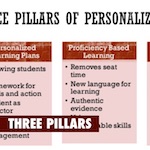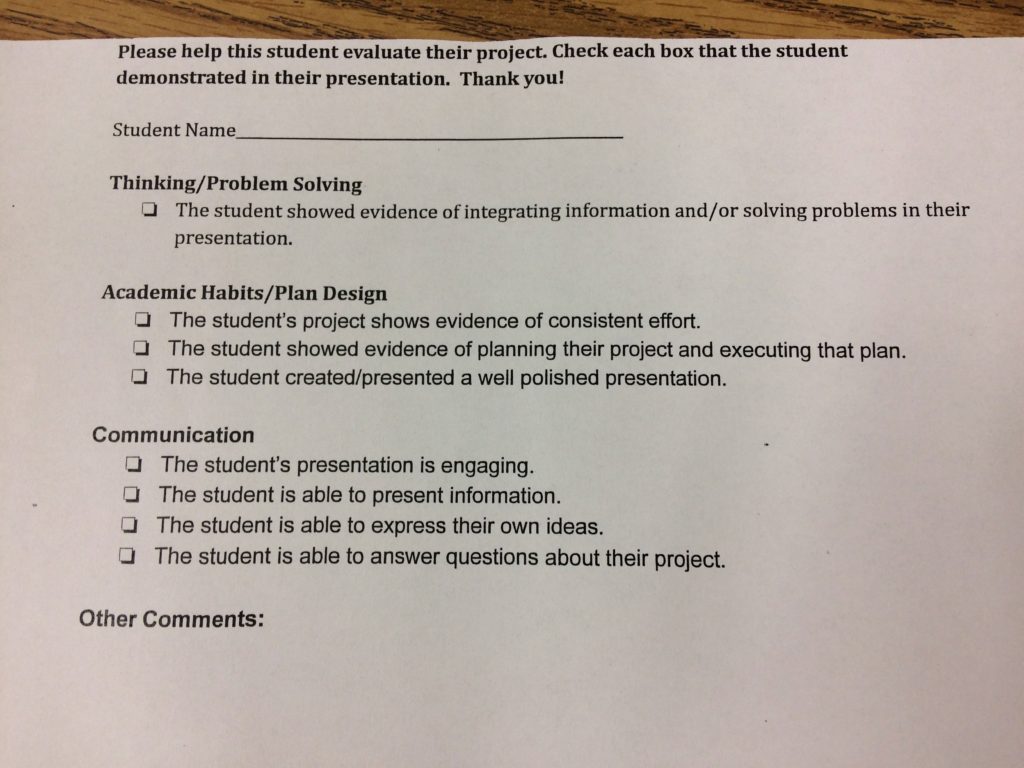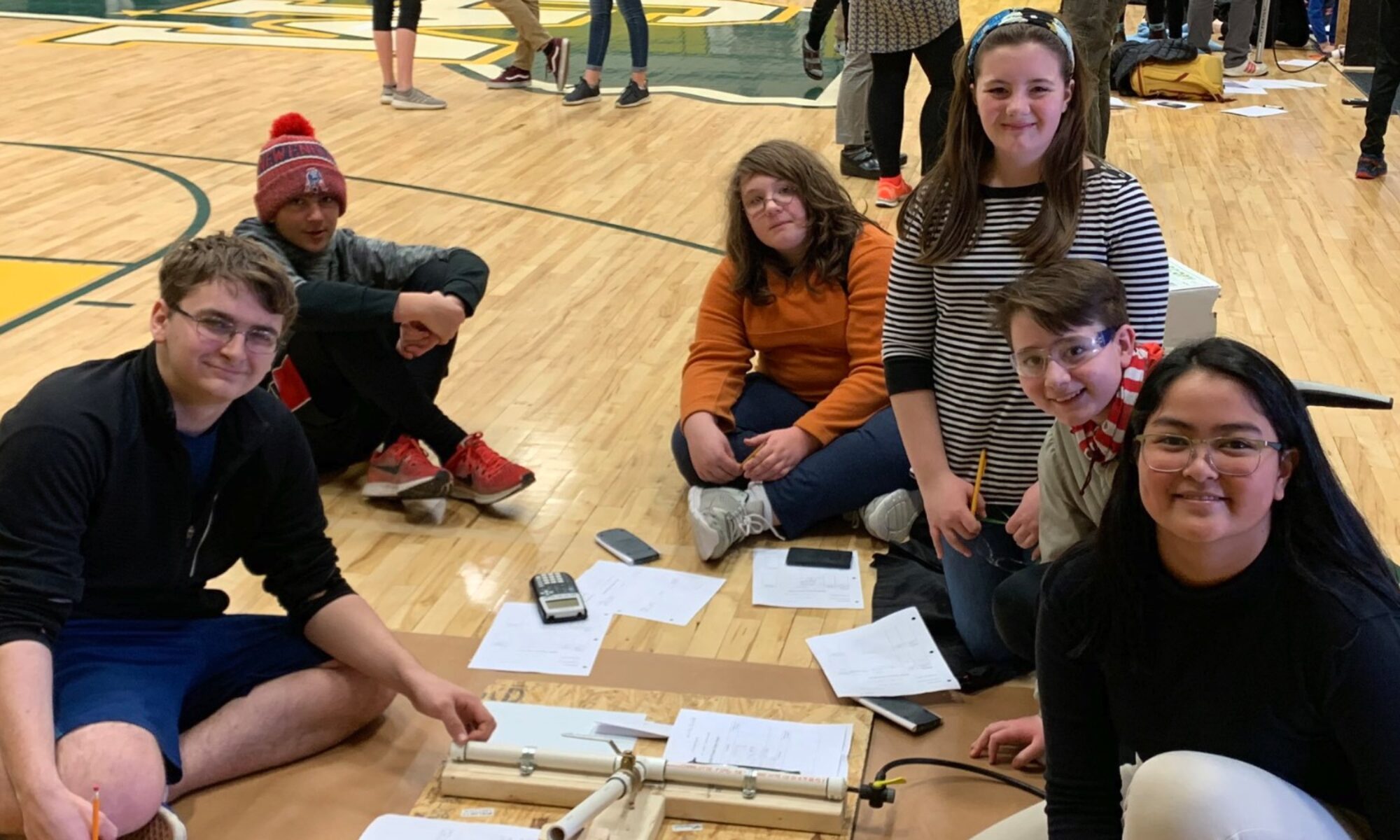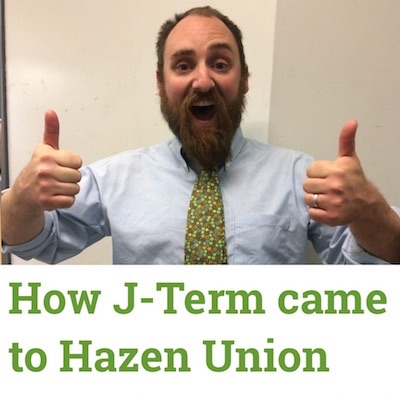Personalized, proficiency-based PBL or bust
 During a faculty meeting in late December of 2016, educators and staff talked about the need to provide personalized learning options for students at their small, rural Vermont school. They wanted do so in a way that honored the students’ need for passion-based, independent projects, as well as the desire of the faculty and staff to provide structured supports.
During a faculty meeting in late December of 2016, educators and staff talked about the need to provide personalized learning options for students at their small, rural Vermont school. They wanted do so in a way that honored the students’ need for passion-based, independent projects, as well as the desire of the faculty and staff to provide structured supports.
But what could that look like in action?
John Craig, Hazen’s Associate Principal (pictured above) describes this opportunity this way:
“At the end of May, our Middle Level will be engaging in a J-Term. Modeled off of the work from Lyndon Institute and many other schools throughout Vermont, our teachers are working to create authentic, hands-on, applied learning seminars. Based off the interests, strengths, and passions of our students, seminars offered will be led by staff and community members to provide opportunities for meaningful learning experiences that are different from what already exists in our school’s curriculum offerings.”
And Hazen 8th grader Abby tells us how this kind of learning is different… and exciting.

How this whole enterprise came about (and how you might replicate it in your context):
How to build a J-Term
The Lyndon Institute defines J-Term as a bounded period of time, a few weeks usually, where students immerse themselves in an intense period of studying subjects of their own choosing. This can look like an internship, or in Hazen’s case, a seminar where students focus deeply on a subject that interests them.
The faculty assembled a survey for students, offering them a choice of topics for the seminars. They built seminars around this student feedback. The offered seminars included art, automotive repair, CPR, soap-making and life-guarding. Students also had the option of suggesting their own personal seminar topic.
And while students did project work in each of their seminars, the faculty required them to commit to a so-called Deep Dive, a self-selected project that honored depth over breadth. This allowed each student to branch out into a topic of interest to him or her based off of one of the seminars. Students devoted an hour each day to these Deep Dive projects, and faculty assessed the Deep Dive via selected learning targets.

Transferable skills drive the train
Teachers thought about what it takes for a learner to be self-directed and curious. They thought about what it takes to be skilled at answering questions and solving problems. They clearly articulated these targets and built out scales for each. In this way, everyone involved understood the goals and could set their sights on proficiencies. And because of this, everyone attending the Exhibition night had the opportunity to provide feedback on these important targets.

Culminating in a school-wide exhibition
On June 14th, the students and faculty invited the community of Hardwick to view the results of their work. Some of the work on display included an art seminar, where students displayed both their products and the process that went into it. Other students presented skills they’d learned in a CPR seminar, along with their new certification badges. One student explained how she saw her twin passions of marine biology and lifeguarding complimented each other. She had researched both over the course of J-Term. Another group of students had dismantled and successfully rebuilt a riding mower in the automotive seminar.

Personalized learning in your school?
Clearly the adoption of J-Term was a whole-school, whole-community effort. It’s important to remember the decision to create this opportunity took place in January. That’s not a lot of time in the grand scheme of things, but those involved decided to embrace the possibilities and make it happen.
In the final days of J-Term, a group of interested educators visited the school to see J-Term in action. Afterwards, Principal Craig shared their feedback with the school’s faculty. The visitors reported feeling like J-Term was an entrenched part of the school’s culture, and that it must have been well-established. The visitors were convinced the school must have been doing J-Term for quite some time. Powerful feedback for an initiative launched in January!
https://twitter.com/OldManCraig/status/872518540703789056
During the final in-service days in June, we gathered to debrief and share the journey with Hazen High School teachers. They wanted to learn more about J-Term, and are considering adapting the model in the high school context. All agreed, the J-Term initiative was a resounding success. A success to build upon in an effort by all, to create personalized, proficiency-based, and deeply engaging learning opportunities.
Why “June Term”?
- Curriculum is the vehicle to teach transferable skills;
- Project-Based Learning allows students to explore interests using transferable skills. It promotes persistence and development of life skills across content areas;
- Hazen teachers have been targeting brain-based learning and have been tirelessly researching the benefits of this type of education;
- When teachers are impassioned, students are impassioned.



One Reply to “J-Term at Hazen Union”
Comments are closed.